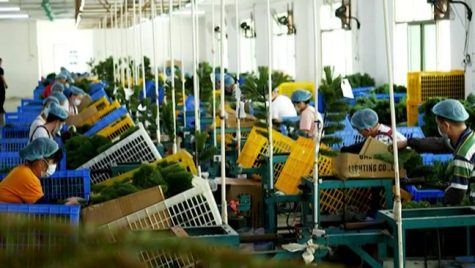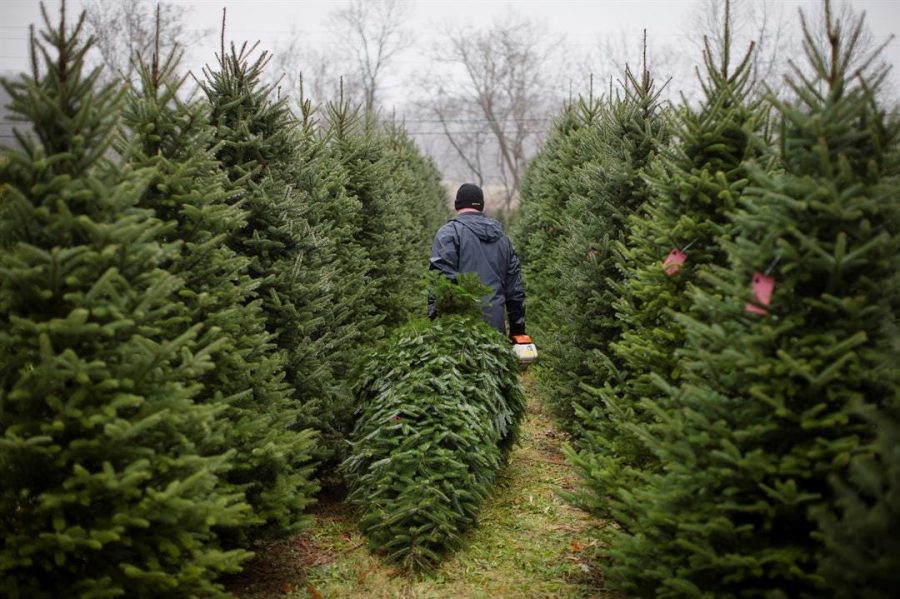The Underlying Impact of Christmas Trees
December 16, 2021
It has reached the time of year when most Americans scramble to stores to hit the holiday sales, are able to indulge in the new Starbucks holiday drink flavors, and are ready to put up their plethora of outdoor lights and decorations; it is indeed the holiday season. For those who celebrate, another essential part of this preparation is purchasing a Christmas tree. Although this purchase may seem to be just one of many made when preparing for Christmas, it is arguably the most important when considering the environment.
The iconic symbol that is a Christmas tree has come to take many forms over the years, whether it is a real tree, a plastic one, or even one with color-changing LED lights and a remote. Although all of these options will sufficiently provide holiday cheer, it is also very important to consider the true impact each of these options has on the earth.
To start, let’s talk about the classic, real Christmas tree. According to the National Christmas Tree Association, “there are approximately 25 to 30 million real Christmas trees sold in the U.S. every year.” That is a lot of Christmas trees! However, this doesn’t automatically make real trees the least sustainable option for your Christmas decoration display. In fact, real trees are actually the most forgiving option in terms of the waste they create post-holiday season. Real Christmas trees are not only a “renewable, recyclable resource,” as noted by the National Christmas Tree Association, but they also help the world in the making, given that a “nice-sized” tree takes around eight years to grow. In those many years of growth, Christmas trees will, of course, take in carbon dioxide and release oxygen, something that is necessary and beneficial for the environment. Unlike an artificial tree, a real Christmas tree will live a purposeful life of giving back to the earth before being placed in its new, indoor environment.
To see this idea from a new perspective, National Geographic, in their article “Real Christmas Trees Save Water,” says that there are “400 million [Christmas] trees right now,” all of which are growing on Christmas tree farms. As there are more Christmas trees than there are people living in the United States—also noted in the article—it is comforting to know that having a real Christmas tree is not as harmful to the environment as it may seem.

On the other hand, there are the increasingly popular artificial trees. At first glance, it may seem as though an artificial tree is the more sustainable option, for they can be reused for many years. However, if only used for a few years before throwing it out, they actually have a larger carbon footprint. From the National Christmas Tree Association, it is stated that “artificial trees contain non-biodegradable plastics and possible metal toxins such as lead”. Considering that artificial trees are not able to break down into mulch, as some local tree services offer, an artificial tree is generally a less sustainable option. If you or your family already have an artificial Christmas tree, don’t worry! If an artificial tree is kept for more than a decade, it will outweigh the sustainability of a real tree and actually have a smaller carbon footprint. In this way, there is a tradeoff. If an artificial tree is able to be kept for an extensive period of time, it could potentially be a sustainable alternative.
Even though a real Christmas tree is the more sustainable option in general, they can be very pricey, especially with the national shortage of real Christmas trees this year. With that being said, there is definitely a trade-off to consider if you want to be as environmentally conscious as possible: can you keep an artificial tree for over a decade? If so, this is a great alternative to purchasing a real tree! If not, a real Christmas is also a great option, and looking into community resources to see if there is a tree service that will pick up your tree after the season is over will ensure that you are maximizing the use of your tree and will result in a happy holiday for not only yourself, but for the environment.
Sources:
https://www.nationalgeographic.com/science/article/111212-real-christmas-trees-save-
water
https://realchristmastrees.org/education/quick-tree-facts/
Image Sources:
https://longisland.news12.com/guide-tree-farms-on-long-island
https://foxsanantonio.com/news/local/nationwide-supply-shortages-impacting-artificial-
christmas-trees

